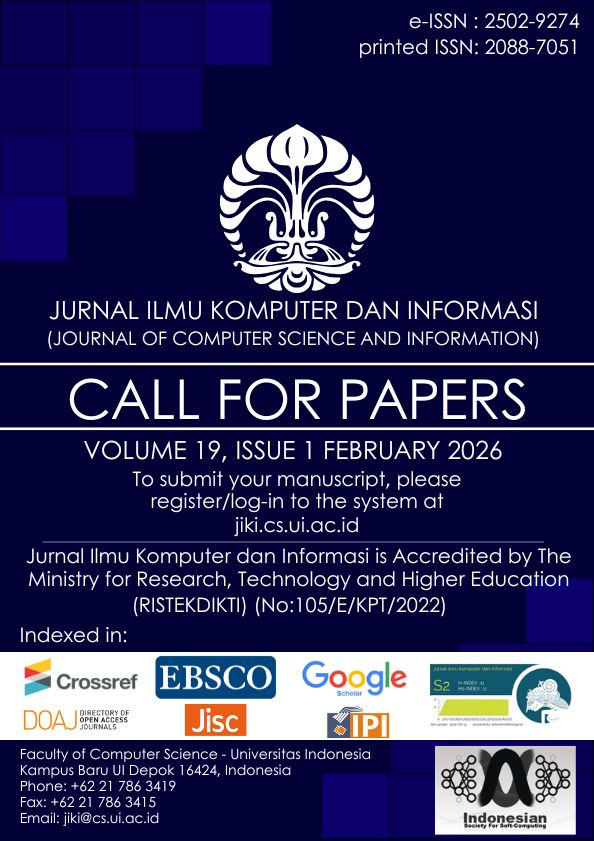Application of Machine Learning Methods for Classification of Gamma and Hadron Signals in High Energy Particle Detection
DOI:
https://doi.org/10.21609/jiki.v18i2.1489Abstract
A major challenge in particle physics is the binary classification of high-energy gamma signals against a complex hadron background. Accurate identification of these gamma signals is critical for particle detection, especially as the volume and complexity of data increases as technology advances. The research developed a machine learning-based classification model to efficiently and accurately distinguish gamma signals from hadrons. Logistic Regression, Decision Trees, Random Forests, and Artificial Neural Networks are used for classification. Principal Component Analysis (PCA) and correlation analysis identified dominant features, while Monte Carlo simulations validated the distribution of gamma and hadron spectra. This study focuses on geometric parameters such as fLength, fWidth, fAlpha, as well as photon distribution and distance effects (fDist) in gamma signal identification using K-Means clustering. The Random Forest algorithm achieved the highest accuracy of 87.96%, with an F1-score of 0.91, which defines its robustness in the classification task. PCA and correlation analysis showed fSize, fLength, and fWidth as the most influential factors in classification. Monte Carlo simulations successfully replicated the spectral distribution pattern with high experimental validation. The research presents a novel integration of geometric analysis, clustering techniques, and simulation validation in the classification of high-energy particles. Machine learning methods, in particular Random Forest, effectively distinguish the gamma signal from the hadron background. The combination of PCA and Monte Carlo simulations improves the understanding of data distribution patterns and key classification factors. This research contributes to the development of a more reliable astrophysical signal classification system with potential applications in large-scale astronomical data management.
Downloads
Published
How to Cite
Issue
Section
License
Authors who publish with this journal agree to the following terms:
- Authors retain copyright and grant the journal right of first publication with the work simultaneously licensed under a Creative Commons Attribution License that allows others to share the work with an acknowledgement of the work's authorship and initial publication in this journal.
- Authors are able to enter into separate, additional contractual arrangements for the non-exclusive distribution of the journal's published version of the work (e.g., post it to an institutional repository or publish it in a book), with an acknowledgement of its initial publication in this journal.
- Authors are permitted and encouraged to post their work online (e.g., in institutional repositories or on their website) prior to and during the submission process, as it can lead to productive exchanges, as well as earlier and greater citation of published work (See The Effect of Open Access).










